There are 11 Bali mountains, which is not necessarily the image of Bali people expect. With so much focus on the beach and coastlines of this island, people have even come and asked in surprise, “Are there any mountains in Bali?” Indeed there are, and they are majestic. Indonesia, being on the Ring of Fire, is a hotbed of tectonic activity that has forged some truly amazing landscapes. As a result, you will find volcanoes in Bali, an ancient caldera and towering ridges. Through the island’s centre, from East to West, the land ascends to great dramatic heights and terrains.
In this Guide to Mountains in Bali, we share not only some of the best or favourite mountains to tackle – be it a volcano trek or a sunrise hike – we also share the cultural and philosophical importance of these mountains.
• Background to Mountains in Bali
• Mount Agung
• Mount Abang
• Mount Batur
• Mount Lempuyang
• Guides for Mountain Hiking
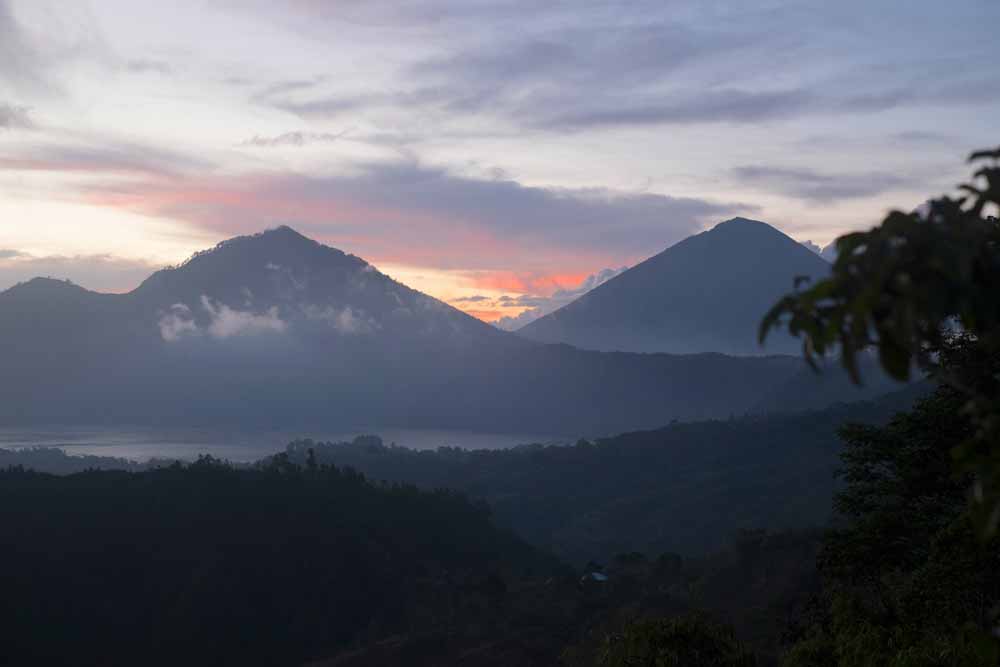
What is the most important of the mountains in Bali?
The cardinal directions of the Balinese are different to ours: kaja (north), kelod (south), kangin (east) and kauh (west). Whilst they seem similar, kaja is not precisely north but rather “to the mountain”, as water, which makes all life possible, comes from the springs of the mountain. Kelod is to the south, but rather to the sea, where “used” water joins the ocean.
Mountains are thus highly respected here in Bali, bringing life through their streams that flow down into the lowland rivers, providing fertility to the land and rice fields. They are also considered abode of the gods, deities and ancestors who live above the mountains in Tanah Ane Wayah, the ‘old country’. In particular, as you will read below, it is Mount Agung that is the most important mountain in Bali, it is also the highest mountain in Bali – and the two are likely to be related.
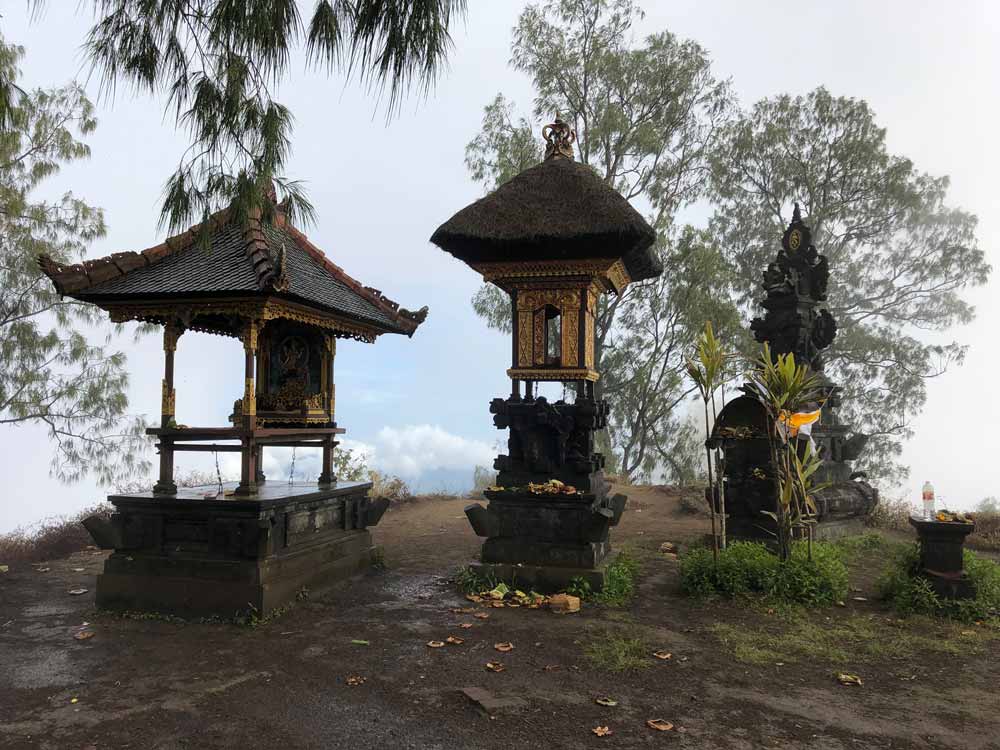
Whatever mountain you decide to trek, you will find many shrines dotting the routes and pathways. Local guides or Balinese pilgrims or even trekkers will find moments to share an offering and pray. It is these moments that separate any other type of trekking experience you have done, with trekking in Bali. Culture pervades all here and whilst you stand in this mountain forest in the mystic dark, you will certainly feel a little part of Bali’s soul.
With that in mind, please remember to respect the mountain you are on, the shrines found throughout, the cleanliness and the local community. Local guides are often required, as are entrance fees to certain areas — your support helps the local communities.
Mount Agung
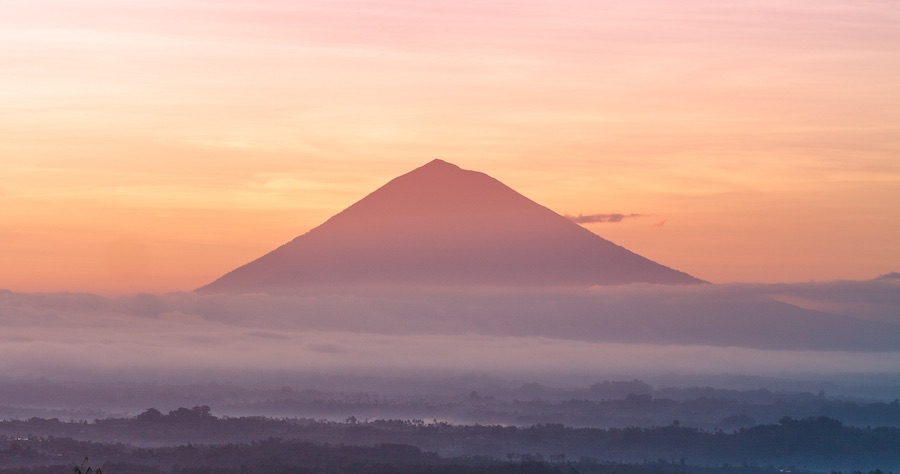
Bali’s holiest mountain – and therefore the most important mountain in Bali! It is said in Balinese mythology that Mount Agung was once in fact the summit of Mount Semeru in East Java. The top of Semeru was sliced off and carried by Basuki the legendary dragon and placed upon Bali to hold the island in place. Agung to this day has remained as Bali’s most respected mountain, home to Pura Besakih, the mother temple, where the sleeping dragon Basuki slumbers and guards. The Balinese set the alignment of their houses, temples and prayers towards the kaja direction, north or mountain-ward, mainly towards this holy mountain.
Standing at 3,043 metres high in Bali’s eastern regency, Karangasem, Mount Agung is in fact an active volcano, last erupting back 2019. It is now considered dormant again and safe to hike. Pura Besakih Temple climbs up the southern slopes of Agung. The Balinese Hindu come regularly for pilgrimage and prayer, travelling up the six terraces and stopping at 22 different temples as they make their way to the top. The views, as you can imagine, are truly spectacular, revealing much of Bali’s south from high above the clouds. A trip to Besakih offers a beautiful blend of culture and nature all in one.
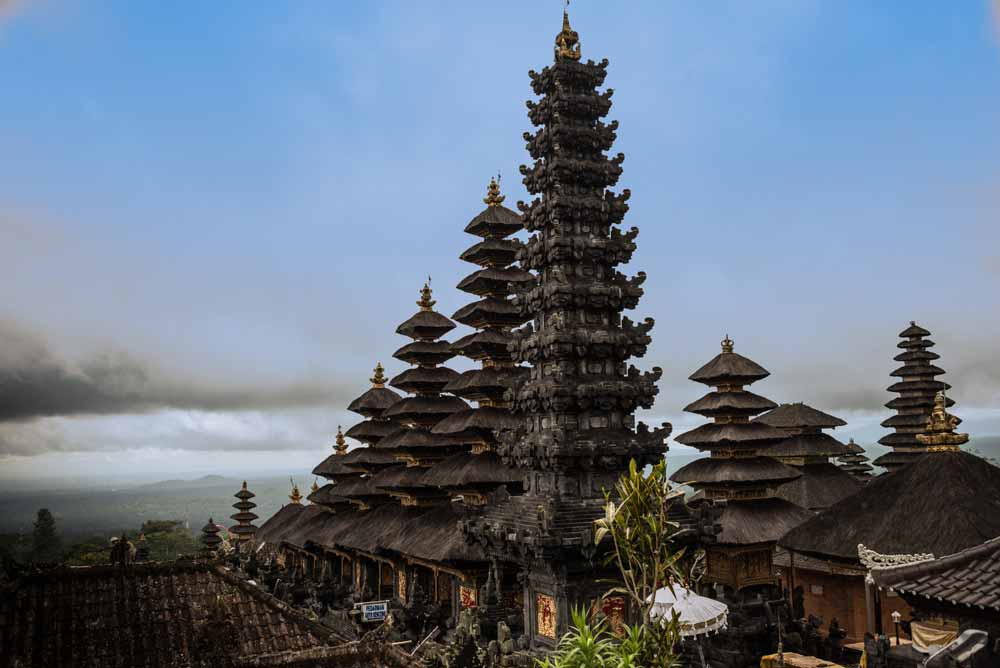
For adventure seekers, the climb to the mountain’s crater rim, battling thick mountain forest and volcanic terrain, is perhaps Bali’s most epic outdoor mission.
There are two regular routes for hikers, the first from Pura Pasar Agung Temple (1,700m above sea level) takes around 4 to 5 hours to the crater. This is normally the route taken for those doing the sunrise trek to the crater which starts at 2am. This is a direct ascent and is an incredibly steep hike up and down the mountain face.
The other route, starting closer to Besakih Temple, takes around 5 to 7 hours depending on your level of fitness. This path takes you through different terrain, with some more flat regions, but is just as challenging and requires a high-level of fitness. A one night camp is possible through this route, making a sunrise ascent to the crater more feasible. Both routes take your through mountain thick forest, and near the crater minor levels of rock climbing and scrambling are necessary.
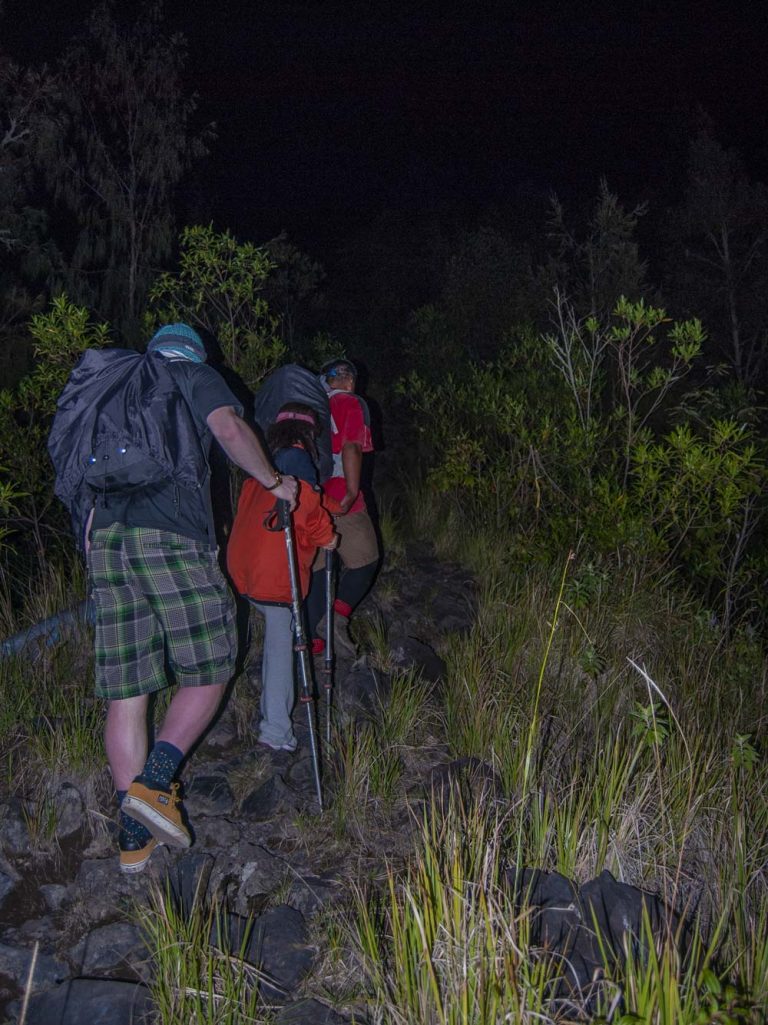
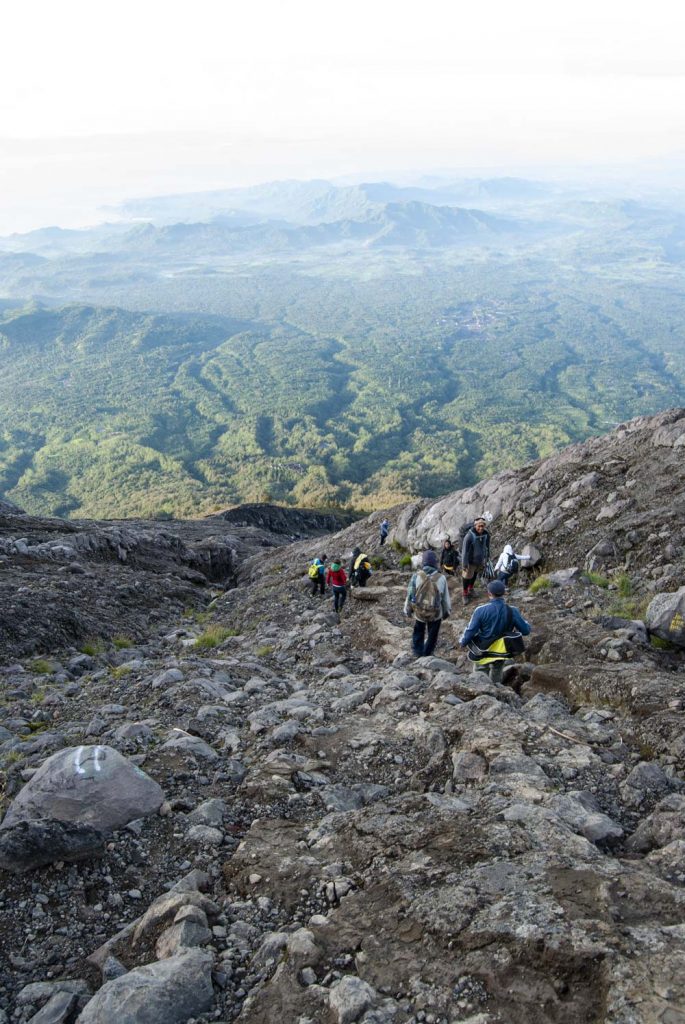
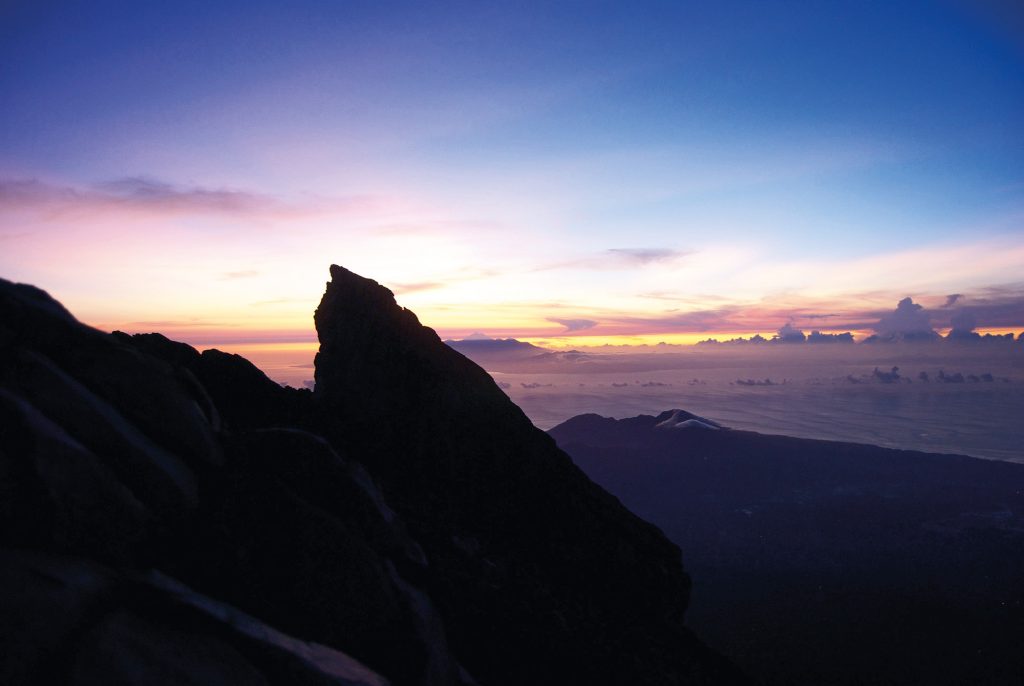
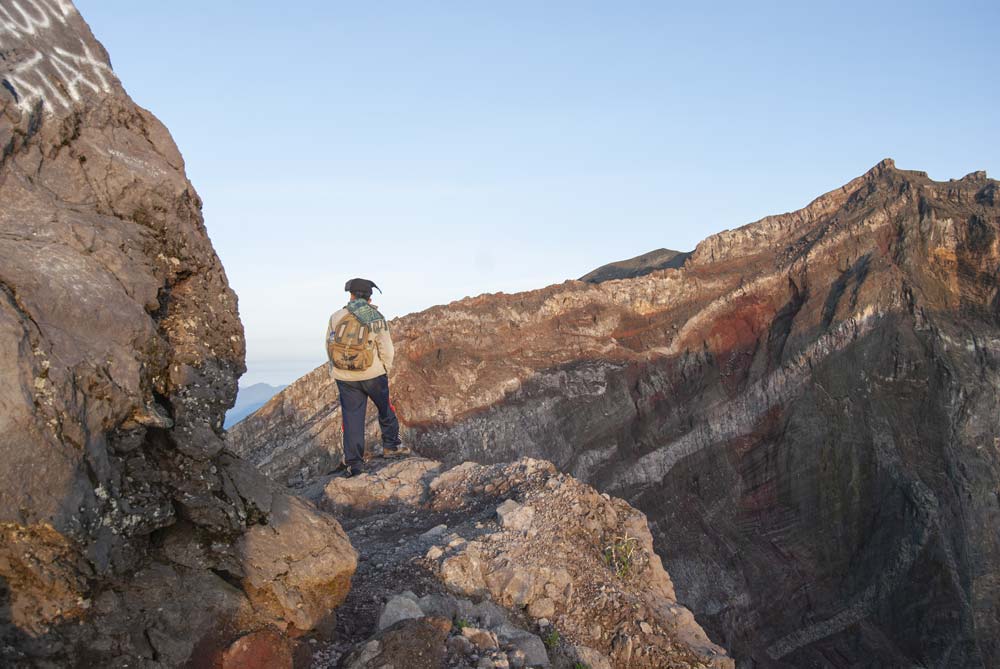
At the top, if the weather is clear, you will be rewarded with undoubtedly the best view on the whole island. The morning light reveals the whole contour of Bali’s south coast. Here, high above it all, you will experience that humbling feeling of just how small you are and just how great and large the Earth really is!
Mount Abang
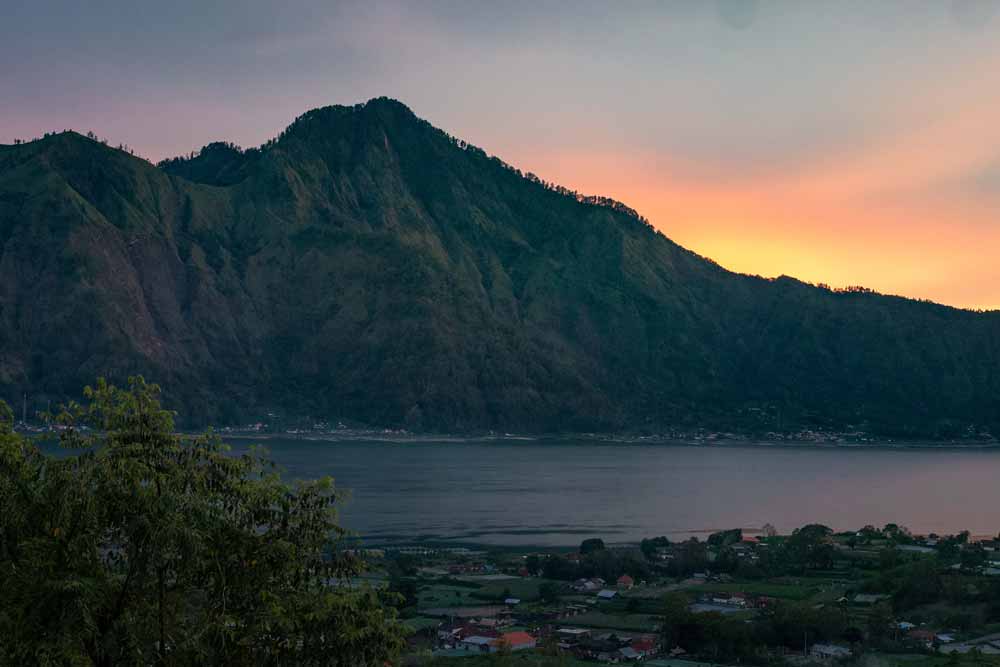
Mt.Abang is the third tallest of the mountains in Bali, standing at 2.152m above sea level. It is more accurately a ridge, as it is the highest point of the epic Batur Caldera, a 10km by 13km crater created by an eruption thousands of years ago.
Situated in Kintamani, the air here is cool and crisp, resulting in a mystical fog which rolls through the thickly vegetated forest that climbs up the exterior of this giant caldera. It’s an environment, rich in deep greens, twisting pines and ancient trees — quite the contrast from the caldera’s centre, Mt.Batur, which is sandy, dry and arid.
There is one main route up Mt.Abang and generally does not require a guide as the paths, which are relatively clear, lead up to the same destination. Then again, using one of the local guides is always recommended. The route is still challenging, especially after a wet morning as the terrain is often slippery mud or rock, with many steep paths which are even more troublesome on the descent.
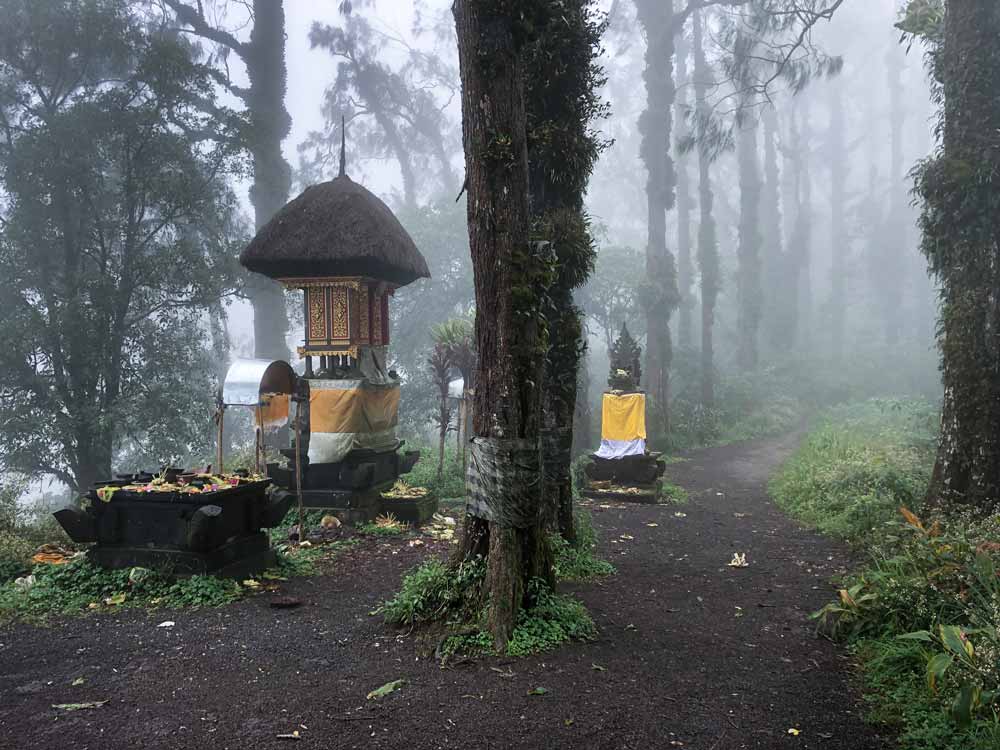
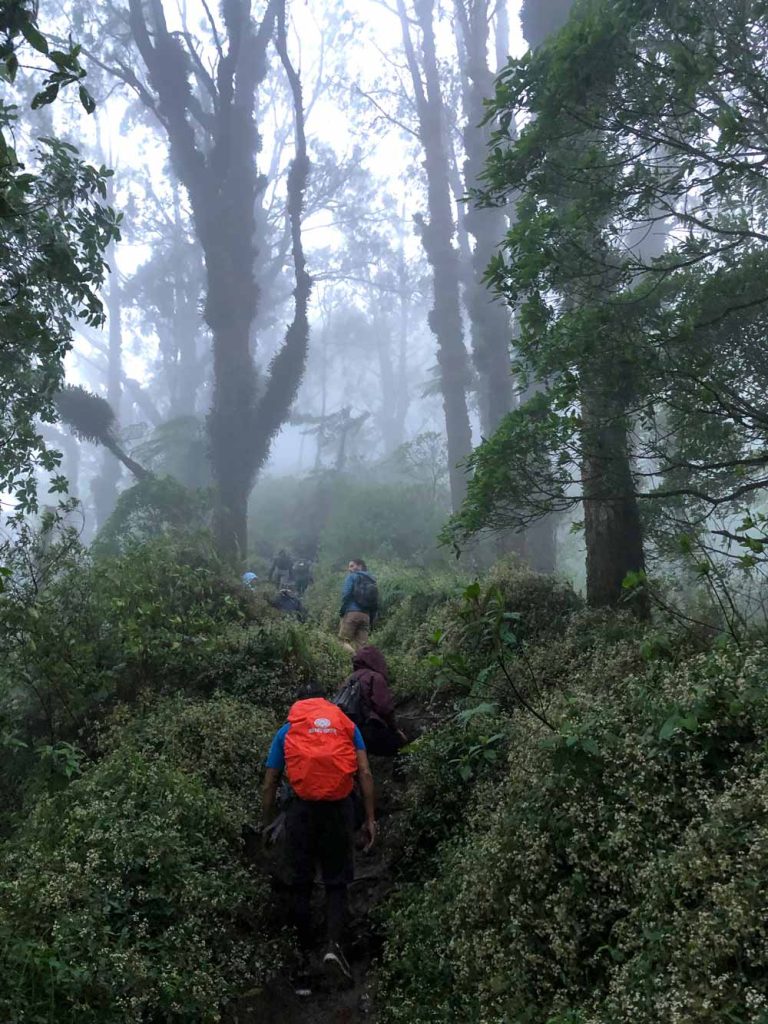
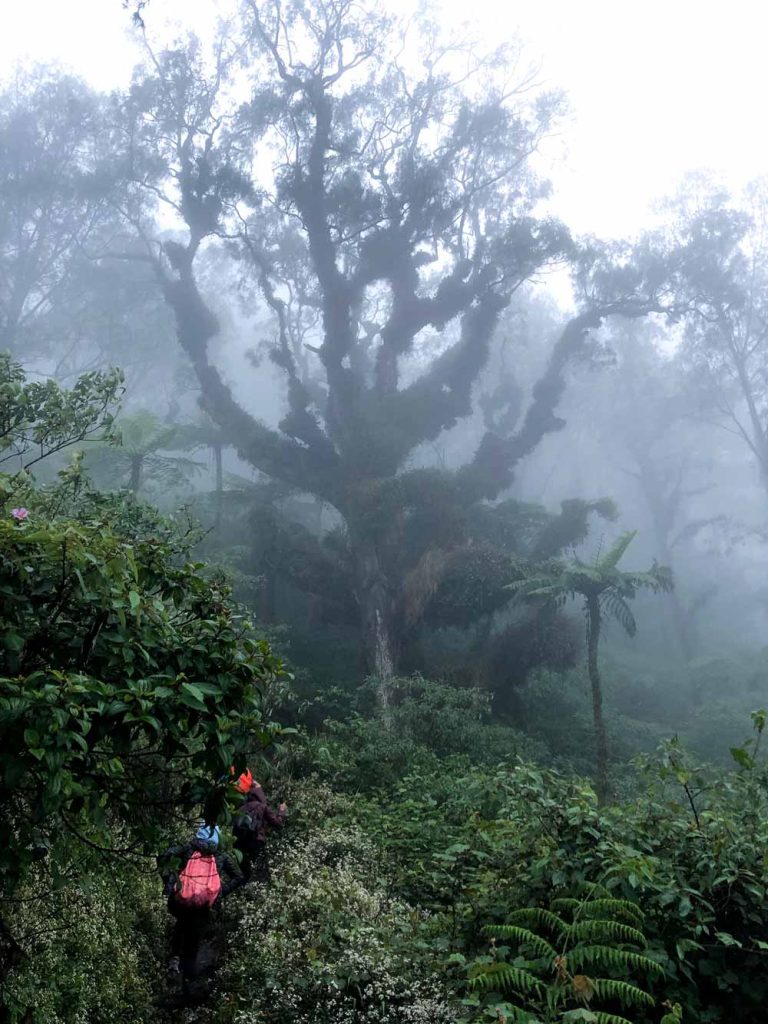
At the top, if the weather is clear, you’ll be granted views down into the caldera’s centrewhich looks small from this high-up perch! Looking east, Mt.Agung can be seen at certain points as Abang towers between the two mountains. At the base of Mt.Abang, on the interior of the caldera which cascades into Lake Batur, you will find find Trunyan Village, an isolated village most famous for their cemetery where they leave bodies unburied, left under bamboo structures.
The trek of Mt.Abang can take anywhere between 3 to 4 hours depending on your fitness and weather conditions. It can be quite cold at the summit, or if trekking at night to catch the sunrise, so its advised you wear or bring some warm and waterproof clothing.
Mount Batur
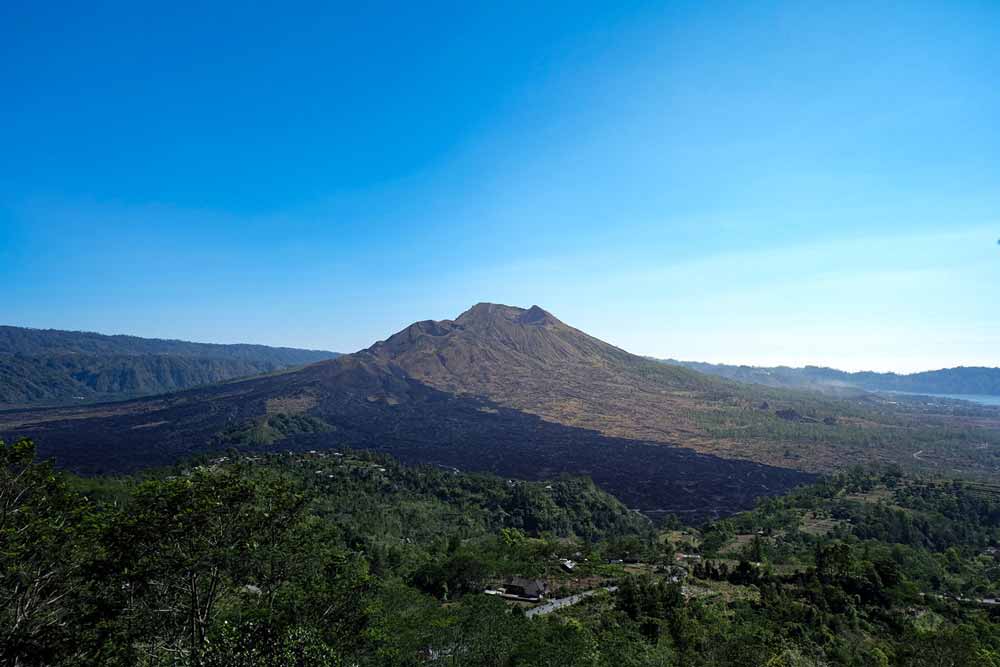
Mount Batur, standing at 1,717m above sea level, has long been the favourite destination for visitors, as it is relatively easy to hike — plus the views from the centre of the caldera are hard to beat! Still an active volcano, with its last eruption being in the year 2000, Batur continues to spout its hot breath into the cool, alpine air of Kintamani. This is probably the most popular and well-known of the mountains in Bali for visitors.
The Mount Batur sunrise trekking offers you the opportunity to see real Bali in every light, day to night – or in this case night to day. Starting at around 4am at the foot of the volcano, misty breathed, wrapped in warm clothing and geared with a headlamp, you will start your adventure in the dark.
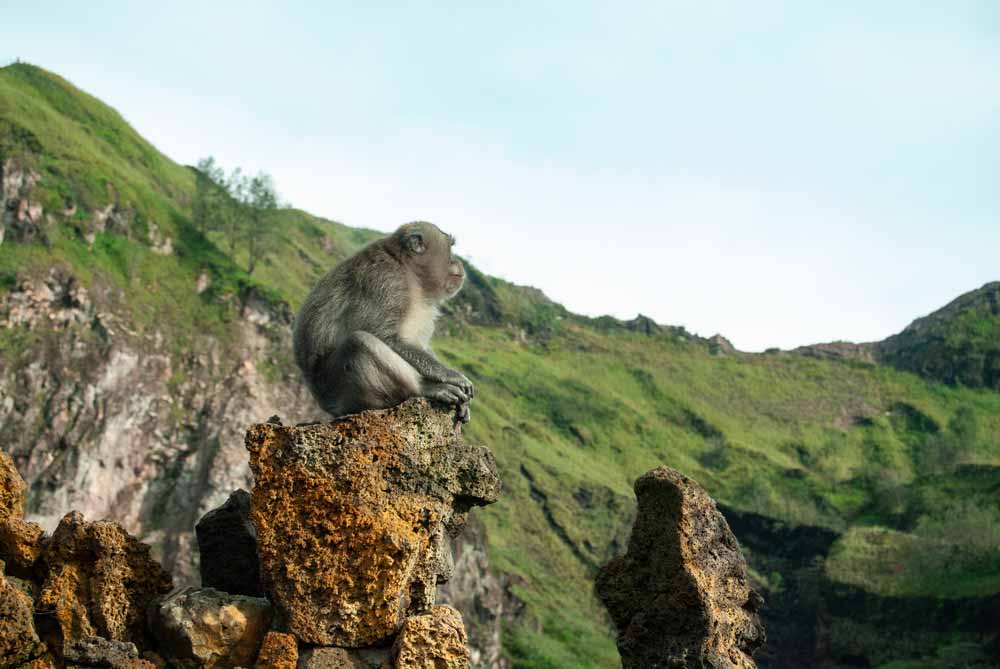
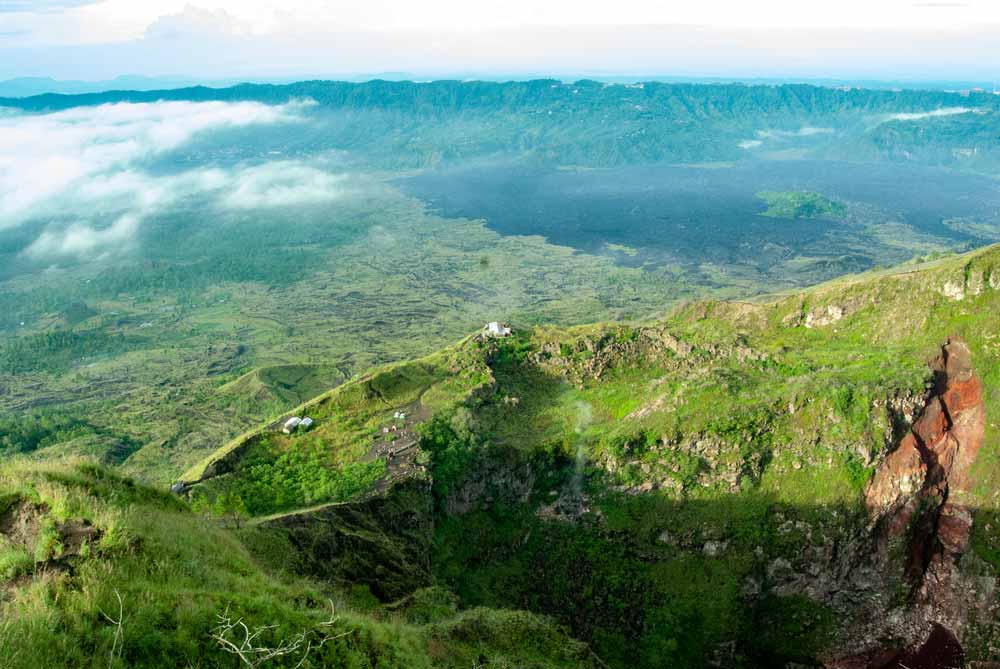
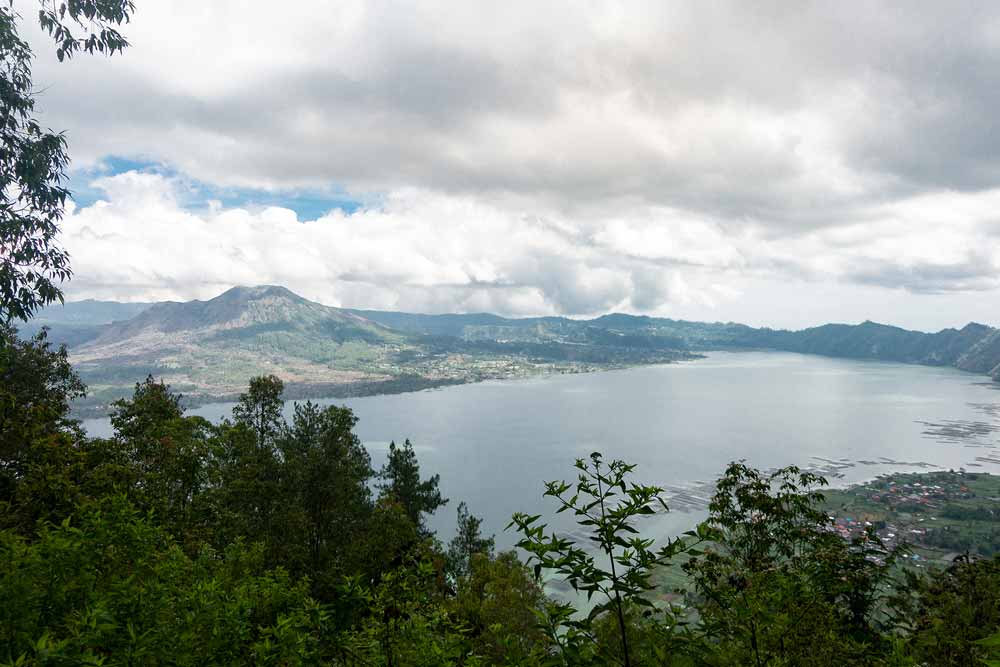
The trek starts through grasslands of the area surrounding Batur, before heading into sparse forest that begins the ascent. As mentioned, the terrain here is more dry and arid. When its busy, you will see a line of headlamps in the distance, snaking up the mountain, showing the changes of gradient in the land. After a final push up the hardest section of loose sand, you reach the top, where resting groups await their prize in the fresh mountain air.
At around 6.20am, the first signs of light dramatically pierce through the morning dew, rising over the giant caldera wall that before now was hidden behind a curtain of night. As the warming sun rises, slowly, a 360-degree panorama reveals itself, the giant Lake Batur sparkles and you finally see the huge caldera around you – which seems to dwarf your opinions of your Batur climb. These are the best views of Kintamani you will get, surely well worth the morning exercise. Inside the caldera, around Batur , you can actually find some Bali mountain retreats, great for glamping with a view… after a trek of Batur or even Abang, head to one of the cafés in Kintamani for a coffee with an amazing view.
Mount Lempuyang
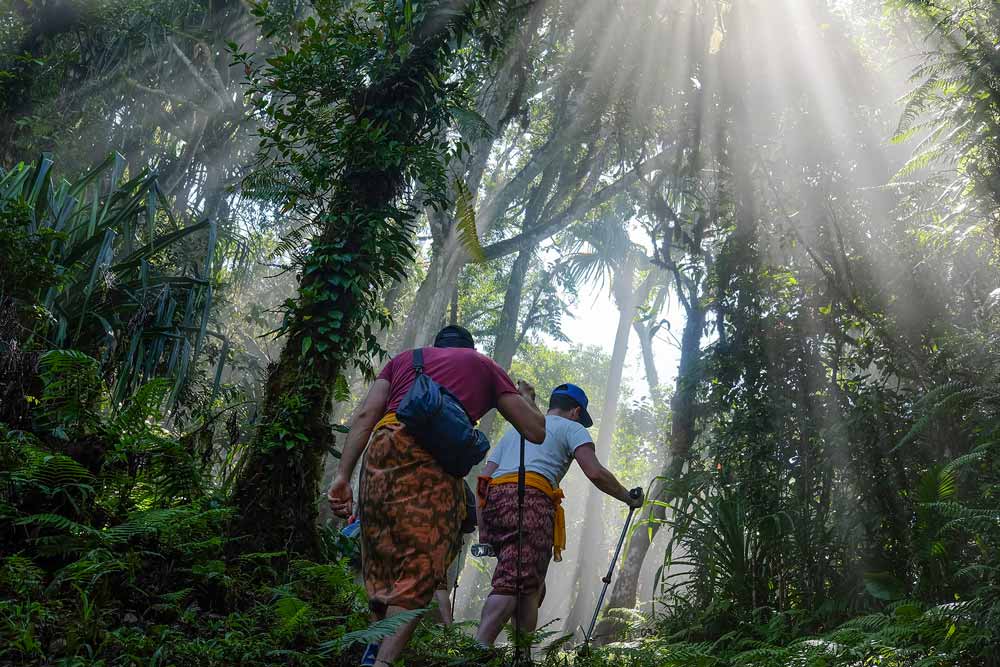
A lesser-known, but equally satisfying trek is found on Bali’s most eastern mountain. Many know Mt.Lempuyang as being the home to the famous ‘Gates of Heaven’, the Instagram-famous temple entrance of Pura Penataran Agung Lempuyang that over looks Mt.Agung.
There is a very peaceful walk up the southeast side of the mountain, on the opposite of the ‘Gates of Heaven’. You’ll trek through sparse woodland and forest, relatively dry, making for an easier trek up this mountain that stands at 1,174m above sea level. There is a clear path up from Jumenang Temple, which is more of a pilgrimage to Pura Penataran Lempuyang Puncak, the temple at the summit of mountain. This is an important temple in Bali, as it is home to special bamboo plants whose shoots are filled with water. This water is considered holy and makes this temple a source of Balinese holy water, or tirta. This trek takes around 2.5 hours to ascend, and you are able to get transportation from the temple-side rather than having to return down the same path, making this more of a traverse (point A-B) rather than a returning route (A-B-A).
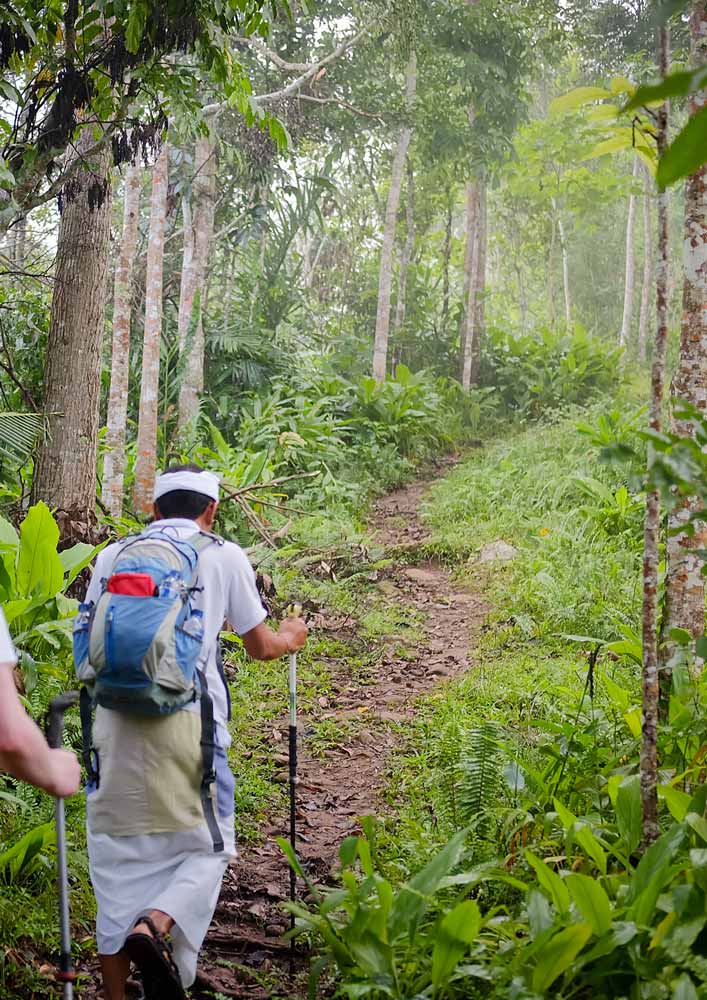
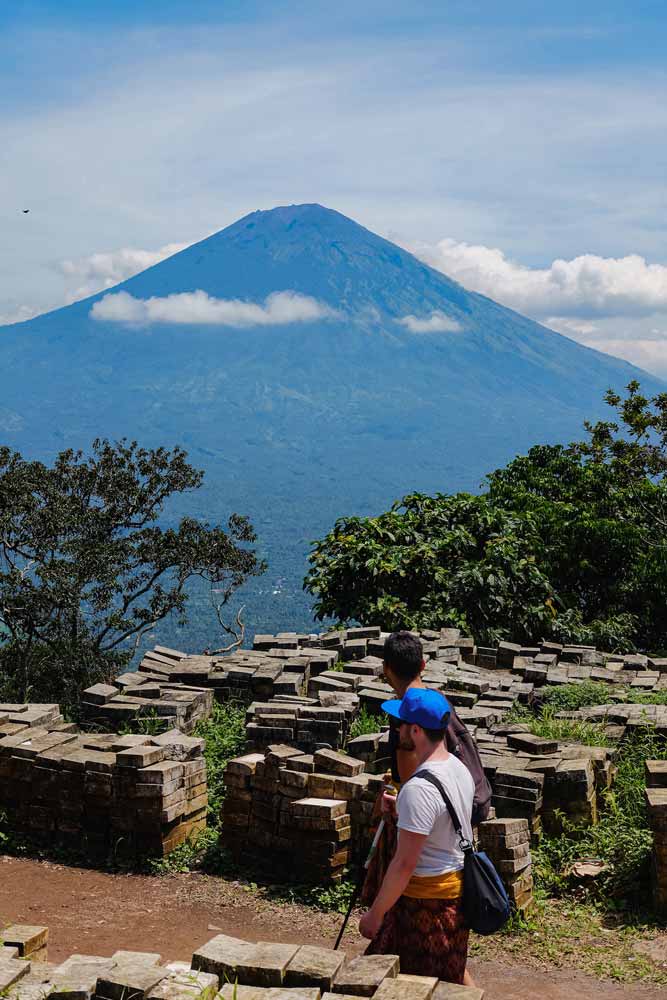
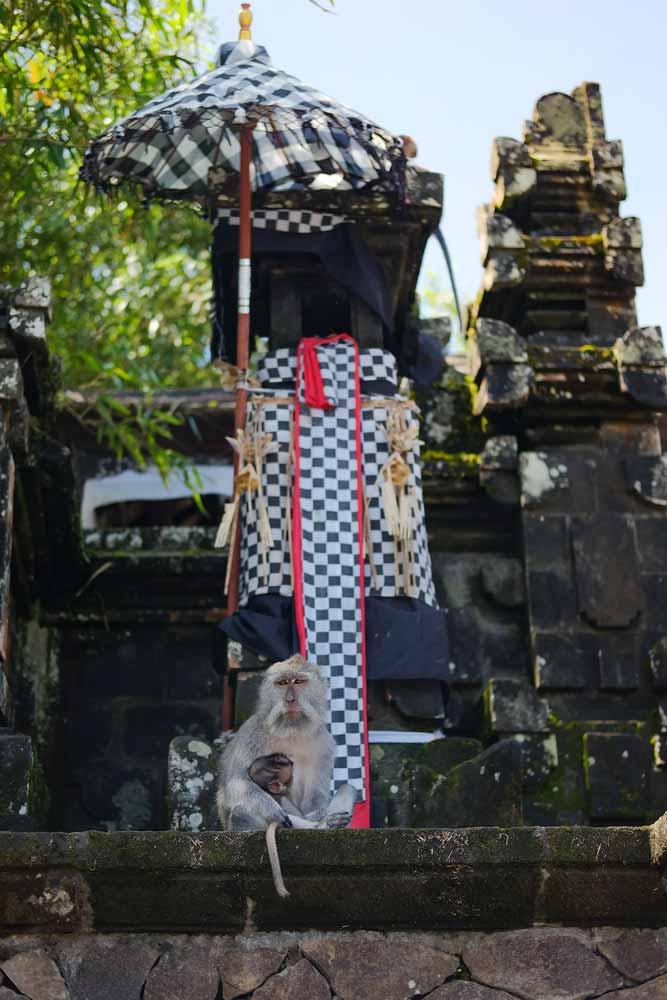
Guides for Mountains in Bali
Mudi Goes to the Mountain: @mudigoestothemountain
www.mudigoestothemountain.com
idGuides: @idguides
www.idguides.org







